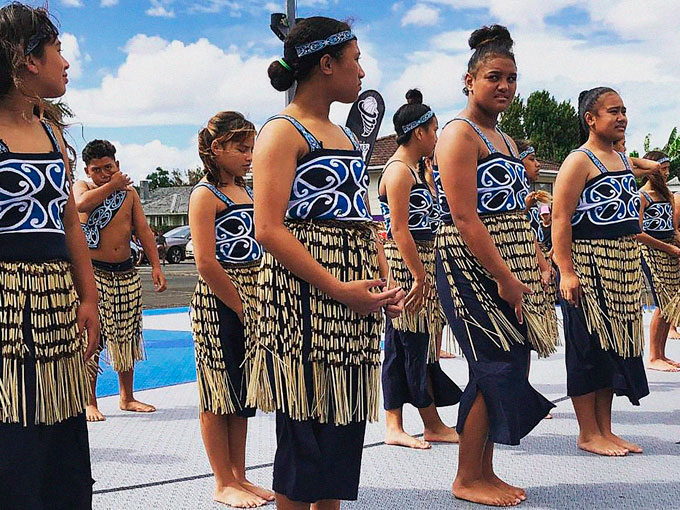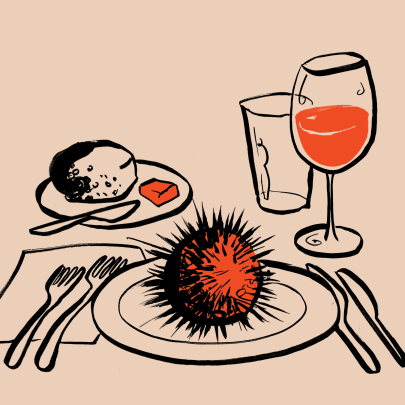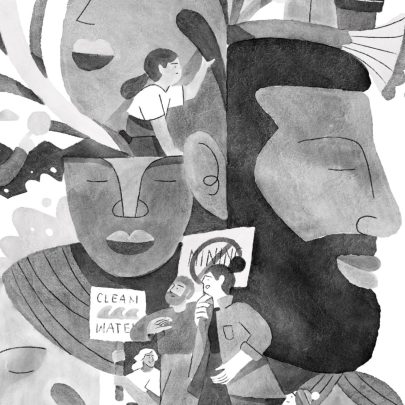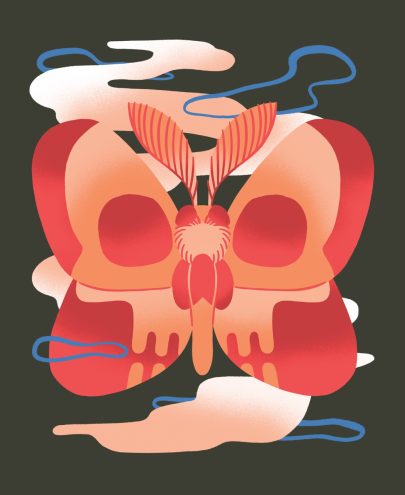Apr 11, 2019 Society
We all want to live in a place where the neighbours look out for you, where the environment is cared for and where there’s plenty to do. But good communities aren’t born, they’re made. Hayden Donnell talks to four groups of Aucklanders who have worked alongside local residents and council to improve their local area, and tries to identify the secrets of their success.
This story initially appeared on OurAuckland and is shared with permission.
Mangemangeroa Reserve, Howick
Mangemangeroa Reserve is vast and full of pests. A legion of weasels, possums and rats lie hidden in its groves of pohutukawa and harakeke, and along the shores of its estuary. The predators have long stopped native birds from fully flourishing in the area, robbing nests and killing chicks. But lately they’ve encountered stiffer resistance. More traps than usual are set around the reserve’s waterfront and in its native bush and, one by one, the predators are being picked off. Every few weeks a group of teenagers comes to collect the latest batch of corpses.
Ethan McCormick is the student trustee for the Envirogroup at Howick College, and the ringleader of Mangemangeroa’s newest band of amateur pest exterminators. He and his fellow group members set and monitor 20 traps around the Reserve, regularly going on two-and-a-half hour expeditions to check them for fresh kills. His days are spent oscillating between schoolwork and eradicating as many invasive species in his local area as possible.
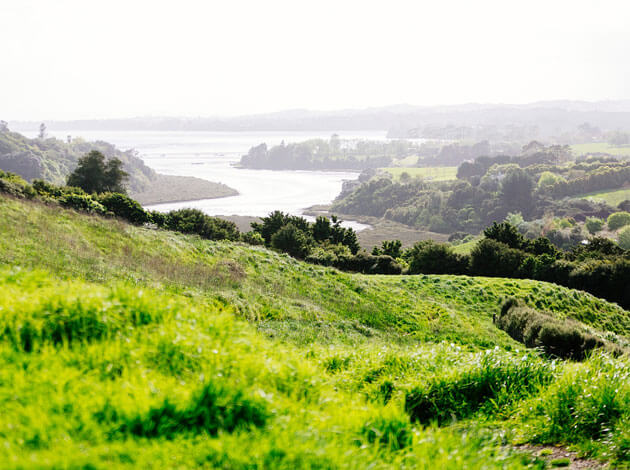
McCormick’s story is a blueprint for how enthusiastic locals can make a difference to their community when given even a little bit of encouragement and support. Though he always cared about New Zealand’s birdlife and biodiversity, his pest control mission didn’t begin until last year, when he was gifted some rat traps at a ‘Pestival’ run by Auckland Council at a local school. He set the traps near Howick College. “We didn’t get much success,” he says. “But we did manage to catch one rat.”
It was to be the first catch of many. Inspired to keep doing what he could to help Howick’s birdlife, he talked to Friends of Mangemangeroa Society member Sally Barclay, who set him to work distributing ‘chew cards’ – strips of corflute coated in peanut butter and used to pinpoint where pests are feeding around the Reserve. His dedication to the task caught the attention of Auckland Council’s Sustainable Schools Advisor Cate Jessep and Pest Free Howick co-ordinator Lorelle Stranaghan. They gifted him and the Envirogroup 20 more traps.
Stranaghan says McCormick and his group are part of a wider effort to make Howick a stop-off for migrating native birds. “It’s really just about having good habitats and low pest numbers so the birds will come here from the Hauraki Gulf islands,” she says. “You imagine the birds are flying in from Little Barrier to Tiritiri Matangi, they’ve come across to another predator-free island on the way, and then they’ll come [to Howick].”
The first trap McCormick and his team checked contained a dead weasel. In one area next to a creek, they collected three dead rats one week and another three a couple of weeks later. The impact was almost instantaneous. “The first time we went down there we saw a couple of blackbirds. The next time there were tui in the trees. There were fantails,” he says. “It’s quite amazing – the birds seem to just know when it’s safe to move in.”
That success had a galvanising effect. McCormick stayed committed to his work and was eventually given more pest traps. He set them in a patch of bush behind his house, near some pohutukawa that had visible pest damage. Four possums have been caught so far. Stranaghan’s story is similar. She was inspired to start her own pest control operation after being given some free rat traps at a Council event, and went on to set between 60 or 70 snares in her area.
Both of them know that to make a real dent in Howick’s pest numbers, they have to keep recruiting. McCormick and his fellow Envirogroup members took the lead in organising a ‘Pestival’ of their own at Howick College on March 20. They gave out free rat traps, just like the ones that got McCormick into trapping, and ran a competition to see who could dig up the most mothplants, an invasive weed afflicting the area. “I think it’s just taking ownership of your own area and getting involved because the results that you get are quite instant and quite amazing,” McCormick says. Stranaghan spends her days talking to students and community groups about how they can do their own pest control. Real change is going to take everyone working together, she says. “Everyone has to take accountability and actually make a difference themselves. Just looking around in their own backyards or their local reserves or when they’re on a walk – we’re all responsible.”
Smiths Ave, Papakura
Violet Slade is setting up for another event inside the Smiths Ave hall. It’s a Tuesday morning, but she already has a decent number of locals with her – some of them helping out, others just catching up. Slade remembers when the hall wasn’t like this; when it was locked up and underused, and people couldn’t even find a key to get into the outdoor toilets. The community was disconnected from the space. Slade was one of the few people who went there regularly. Things started to change in earnest about two years ago, after Angie Tangaere turned up.
The Smiths Ave hall sits on the corner of a big section. Most of the property is occupied by some dilapidated netball courts. A newer-looking 3 vs 3 basketball court is closer to the hall itself. When Tangaere, a social entrepreneur at the Southern Initiative, arrived at the area, the hall and the surrounding reserve had its share of problems. There was regular vandalism and alcohol abuse on the site. Tangaere traces the issues back to the early 1980s, when the local premiership netball competition moved out of the area and down the road to the nearby Bruce Pulman Park. “That sucked the life out of this place because what we were left with was a site that was no longer fit for purpose,” she says. “It’s kind of just spiralled into disrepair over time.”
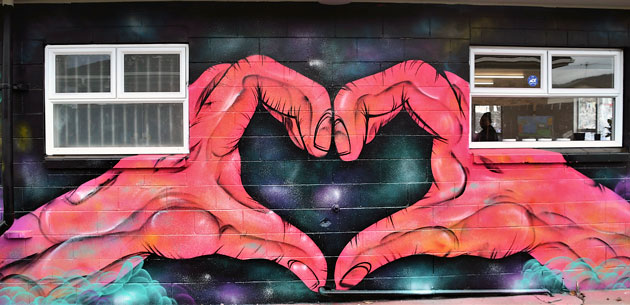
Tangaere embarked on a programme of what she calls “deep empathy” with local whanau, often sitting for hours at a time to talk about what they want for the reserve. It was an attempt to put the concerns of a community at the centre of the efforts to remake the hall; to make them into co-designers. “We needed to put families and their lived aspirations at the centre of what we’re doing,” she says.
A lot of changes came out of those meetings. The hall has new toilets. Its kitchen has been upgraded. A heat pump is going in. People know where the key to the outdoor toilets is now. Most visibly, the outside of the once-bare building is now covered in murals painted by local and visiting artists. There’s a pepeha connecting the hall to its history and place, and nearby are two pieces of art that speak to the most important change happening at the Smiths Ave reserve: a heart on the front of the building and a huge print of the word ‘aroha’ at the rear.
Slade and Tangaere say the main thing that’s happened at Smiths Ave is that the hall has transformed into a welcoming and inclusive place; one that serves and connects its community. The hall used to have a $20 per hour fee for hireage, which was a barrier for many local residents. That has recently been removed by the Papaukura Local Board and now it’s used nearly all the time.
Mel Browne, who runs a workshop every Friday at the hall called Circuit Breakers, says it has become a place where everyone feels safe and comfortable. There are no gates or locks, and anyone is free to turn up anytime. “It’s such a luxury to have people walk over here,” she says. “Other places, they’re locked down. This place, it’s open.” Sarah Tonga, a Papakura local who helps run a community lunch at the hall every Saturday, says it has become a refuge for some locals. Smiths Ave is a lower decile area and some residents face complicated and difficult lives at home, she says. “A lot of youth or children, they come because maybe home is just too much. When we’re able to open this space for them so they can come be who they want to be and do some positive activities, it changes the way they feel about life.” Slade says she tries to use the hall to give local families experiences they couldn’t otherwise enjoy. “Some of our whanau can’t afford to go to some of these flash places in town. So we try to create what they want. If it’s a movie night, we’ll create a movie night. If it’s disco or dancing then we’ll try to do that.”
Hobsonville Point
Few places in Auckland are changing as fast as Hobsonville Point. What used to be a sleepy area on the northern tip of the Waitemata Harbour has become a booming medium density suburb in a matter of a few years. Thousands of new homes have been, or are being, built. About 11,000 people are expected to live there by 2024 and new waterfront restaurants, bars, walkways and playgrounds are springing up.
One of things Hobsonville Point trumpets in its marketing is that though it’s far from the city centre in physical distance, it’s only 35 minutes away by ferry from Catalina Bay. Commuters in the area have long been able to head into and back from town easily. Until recently, though, ferry services weren’t available to them on the weekends. It took almost unprecedented action by the area’s residents to change that.
Lindsey Dawson is a member of the committee for the Hobsonville Point Residents Society. Its structure is unusual in Auckland. Every new resident in Hobsonville joins up and pays $200 per year to maintain and improve the area. “We all work together to keep [Hobsonville Point] in good nick and keep it being a nice place to live,” Dawson says. “Because it’s designed to be medium density, it’s a much closer knit community than most other places in Auckland and it was really important that it was set up with ways and means for people to work together.”
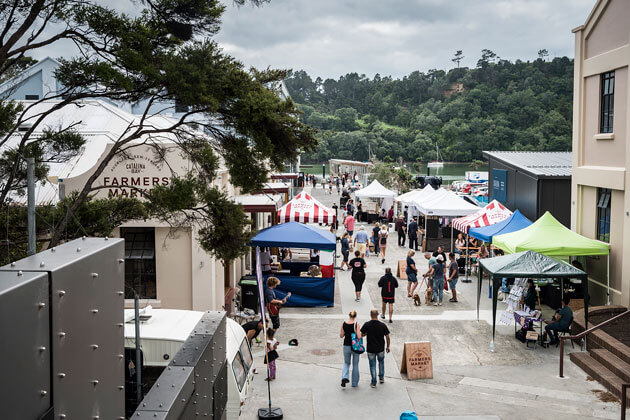
The society’s suburb-wide buy-in gives it extra resourcing and decision-making heft, both of which came in handy when it turned its attention toward Hobsonville’s lack of weekend ferries last year. Dawson says it didn’t make sense for a growth area that was home to an increasing number of bars and restaurants to be inaccessible by public transport at the times most Aucklanders were out enjoying themselves. She and her fellow committee members worked out an agreement with Auckland Transport: if its members could stump up $50,000, the organisation would combine that with a contribution from Hobsonville’s development company HLC and advance a weekend ferry trial for Hobsonville.
The decision on whether to help fund the trial was put to a vote at the Hobsonville Point Residents Society’s AGM, which was attended by 300 people last October. The decision to go ahead with the ferry trial funding was carried by an overwhelming majority. Dawson says the move shows the advantages of a community being able to pool its resources to effect meaningful change. “It’s very unusual for a place with one central body to be able to say ‘let’s do this’. It’s also a very democratic business. The people go along and vote and something happens, and we all like it,” she says.
Ferries now depart from Catalina Bay in Hobsonville point seven times a day on weekends. And each one of them is evidence of the difference you can make when you get a whole community to get behind – and invest in – a single cause.
Waiuku
Ian Scobie readily admits his mangrove-clearing mission started off illegally. When the former boatbuilder moved to Waiuku 14 years ago, he was disappointed to look out over the estuary behind his house and see the water was completely blocked off by a thick wall of mangroves, so he started doing some cutting. Things quickly escalated. “Originally I just started making a little patch, and then I thought if I just cut a narrow strip out to the channel, I could take my kayak out,” he says.
Scobie would clear the mangroves then burn the branches in his backyard. His clandestine mission had to end after a neighbour, angry that their washing was coming back smelling of smoke, reported Scobie to the council. “The council came out and said ‘you’ve been a bit of a naughty boy, you’ve got to stop’,” he says.
The incident inspired Scobie to take his mission to the masses. He set up a petition in Waiuku’s main street asking residents whether they would support clearing some of the mangroves that had come to dominate the three strands of the Waiuku River surrounding the town. He got 97 per cent support for his cause. Before long a band of locals were committed to making the petition’s goal a reality. They called themselves The Mudlarks.
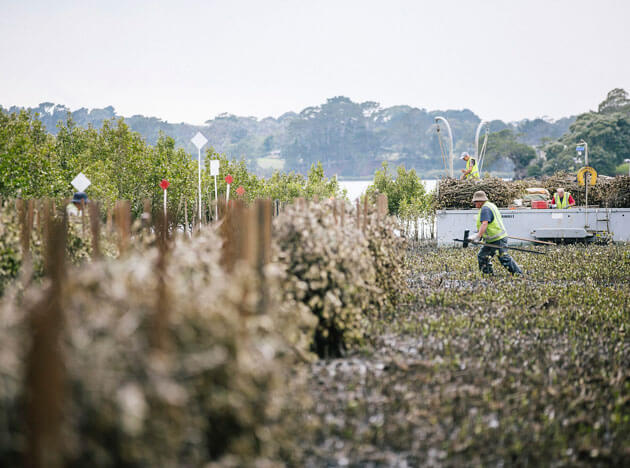
The group initially got council consent to clear 9 hectares of mangroves. They set to work, cutting the plants with chainsaws at low tide, then carrying the wood away on a barge at high tide. It was arduous, physical work, but Scobie in particular threw himself into it with unwavering dedication, arriving before anyone else and cutting for four or five hours as many mornings as he could. “I’ve sort of been more of a worker than a thinker,” he says. “I’m a builder and a boat-builder. A farmer. When I retired, no way I was going to sit around waiting for God. So I had to find something to do. And once I started down there, that’s when the obsession took over,”
It’s been 10 years since The Mudlarks formed. In that time they’ve put 45,321 man hours into their work clearing 24.6 hectares of mangroves. They’ve worn through 17 chainsaws (council now gives them $10,000 a year to help with maintenance), built a wooden bridge, and most importantly, radically changed the look of the Waiuku estuaries. Residents can access their waterway. Boats, once cut off, are now seen regularly in the river near the town.
In 2015, The Mudlarks got consent to clear 75 hectares of mangroves over 30 years. The group will be around for decades yet, though Scobie himself is starting to cut back on his own work. To honour his efforts over the years, his fellow Mudlarks made him a plaque. It had pictures of them at work in the estuaries next to some inscribed words that apply to him, but equally to Ethan McCormick, Lorelle Stranaghan, Angie Tangaere, Violet Slade and the thousands of other Aucklanders who understand that if you love where you live and want to improve it, you need to put in some effort. It reads: “A magnificent obsession.”
This story originally was originally published in the April 2019 issue of Our Auckland.

